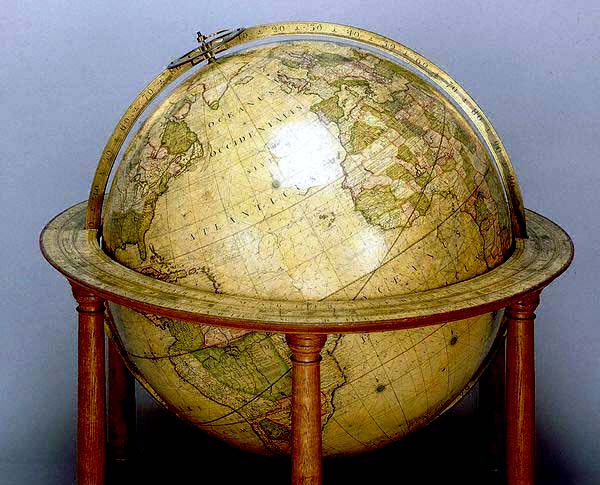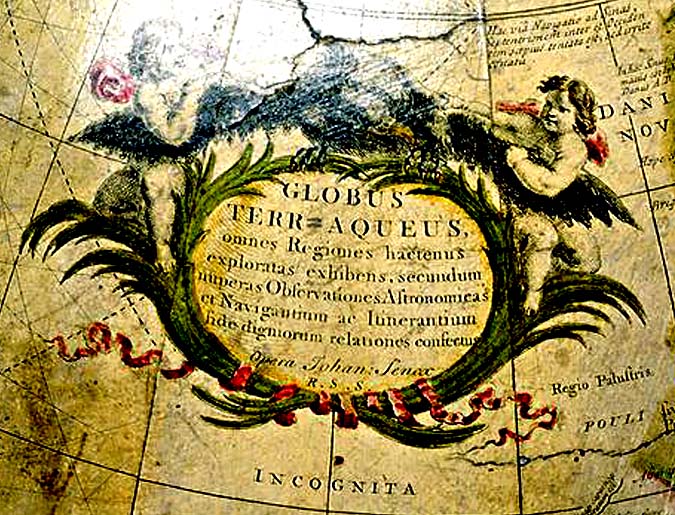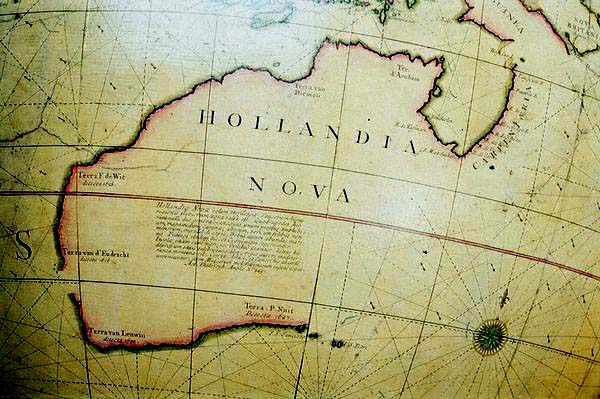

Materials: papier mache; plaster; copper plate engraved; varnish; brass; wood; paper; leather; ink; hand-coloured
Measurements: Overall: 930 x 880 mm;
Sphere diameter: 680 mm
Location: Caird Collection, National Maritime Museum, London
Description:
Terrestrial table globe. It forms a pair with the celestial globe, Geographical details on the sphere include loxodromes drawn for 32 compass points. The monsoons are indicated and trade winds are depicted by arrows between the parallels. Around the North Pole is the label, 'TERRA ARCTICA INCOGNITA'. California is drawn as a peninsula and a hypothetical Antarctic continent is absent. There are 22 notes on discoveries, for example South Africa, below the Cape of Good Hope, North of Australia and in South America, below Cape Horn.
Anson's track is added in manuscript, 'Lord Anson's Voyage to the South'. Eight oceans are named. Anson's track, added in manuscript on the present example, may be significant since the original owner, Lord Hardwicke, who was Lord Chancellor of England, was Anson's father-in-law through Anson's marriage to his elder daughter, Lady Elizabeth Yorke, in 1748. From a mechanical point of view, this is a very well-made globe. The superior craftsmanship of Senex is also clear. The use of Latin on an English globe is rather unusual and could indicate that Senex intended his 680 mm (27 in) globes for the learned world, such as for professors in astronomy and geography.


| return to John Senex 1680-1740 | Go to Paradise Islands |